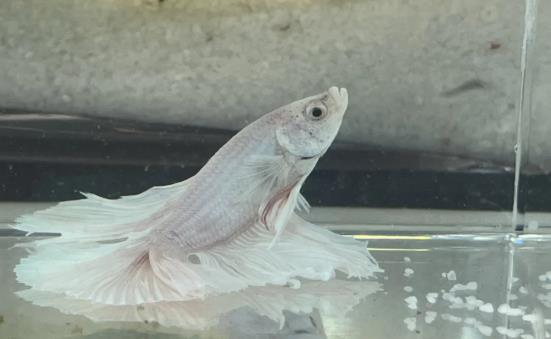There are several possible reasons why betta fish often lie on the bottom of the fish tank. Here are the common situations and solutions:

Environmental Factors
Unsuitable Water Temperature: Betta fish are tropical fish, and their optimal water temperature is 25-28°C. Too low a water temperature will slow down their metabolism and reduce their activity. It is recommended to use a heater to raise the temperature slowly (no more than 2°C per hour).
Water Pressure Adaptation: When betta fish are transferred from a small bottle breeding environment to a deep water tank (such as 18-20cm), they need to gradually adapt to the water pressure. You can first use diving (water depth is twice the fish's body) for 1-2 days, then slowly deepen the water level.
Water Quality Issues: Excessive ammonia nitrogen or nitrite can cause discomfort. It is necessary to change the water twice a week (each time ≤1/3), keep the pH value between 6.5-7.5, and pay attention to the temperature difference when changing water.
Health and Behavioral Problems
Disease: If accompanied by white spots on the body surface, rotten fins or shortness of breath, it may be a bacterial/parasitic infection. It needs to be isolated and bathed with drugs such as yellow powder and methylene blue.
Stress Response: New fish entering the tank or strong light and noise will cause them to hide. You can shield them from light for quiet rest and add almond leaves to provide a sense of security.
Normal Rest: Betta fish will stay still when sleeping, usually choosing a position at the bottom of the tank or near the water surface. It is necessary to ensure 8 hours of light every day to avoid disturbance.
Emergency Treatment Suggestions
Immediately check the water temperature and water quality. If necessary, change 1/3 of the water and add coarse salt (1 gram per liter).
Stop feeding for 2-3 days, and after recovery, feed high-protein feeds such as soaked red worms.
If the fish lies on its side or has abnormal breathing, lower the water level to 1-2cm and increase oxygen.
Long-Term Maintenance Points
Use a 15-20cm square tank, and avoid round tanks as they affect eyesight.
Place duckweed or moss nets on the water surface to provide a resting area.
Interact with a mirror for 5 minutes every day to stimulate their fighting spirit.
If there is still no improvement after adjustment, it is recommended to consult a professional fish keeper or veterinarian.
